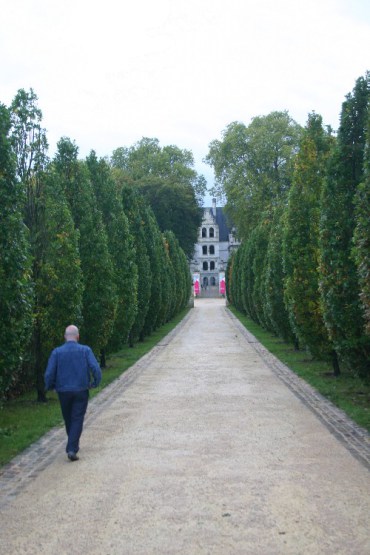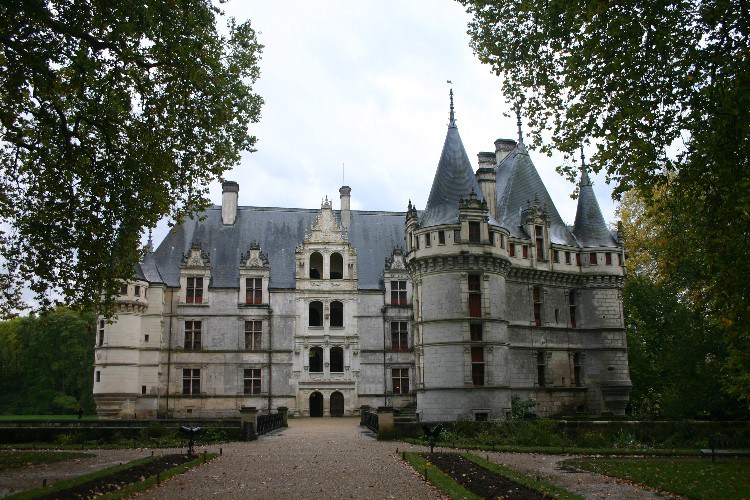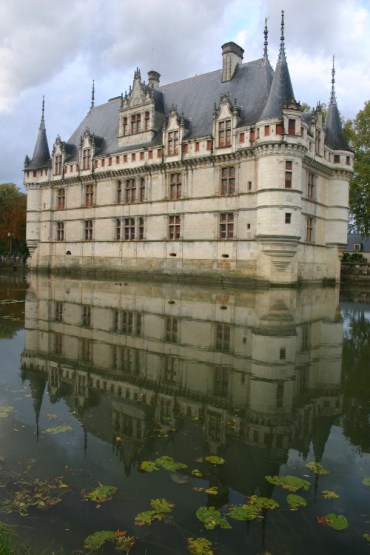The brilliant sun shines down on us as we start our second day of châteaux-hopping.
We go the opposite direction (downriver) today as we head out of Tours, passing through little village after little village, all alive with life as people take advantage of the beautiful day. Day two of our château hunt starts now.
Our first stop today is the beautiful Château de Langeais, which still has a working drawbridge, although the moat itself has disappeared. In this castle Anne of Brittany married Charles VIII in 1491, and thus, Brittany became part of France. In its garden are the remnants of a much older castle, built and used as a dungeon, about 1,000 years ago. The Château de Langeais was never put to the test as a château-fort, a good thing because although its town side is imposing, its garden side would have been easy to breach. When stable peace arrived, it was never converted into from a château-fort to a château-plaisir, and was falling into ruin when it was bought over 100 years ago by a wealthy industrialist, who restored it to its original condition and filled it with treasures from the Middle Ages, then donated it to the people of France. It is fascinating to see the furnishing and clothes of the period.
On to Chinon
We drive across the Loire and to Chinon, home of the magnificent Loire red wine. The smell of crushed grapes perfumes the air, and while most of the harvest is in, we see the occasional harvester at work, finishing the last of it. The Château de Chinon, another castle that didn’t survive the transformation from wartime to peacetime, is more akin to what we think of when we say castle. Home to the English kings Henry II and Richard Coeur de Lion, it was the place where the young Joan of Arc successfully identified the disguised Dauphin, and so was to change the direction of the 100 Years War and help lead the French to victory, and force the English to relinquish their claims to Normandy and Aquitaine. In Chinon, the weather turns, and from the brilliant sunlight of this morning, we now have torrential rain. We take refuge, conveniently, in the local brasserie, and have a lovely lunch, accompanied of course by a pichet of Chinon.
From Chinon, we drive in the driving rain to l’abbaye royale de Fontevraud, which was once one of the largest monastic complexes in the world. Here, Eleanor of Aquitaine took refuge on numerous occasions. Two of her children were raised here, and she, Henry II and their son Richard Coeur de Lion (without his heart, as we discover later, more on this to come) are buried. The rain has stopped as we drive back up the Loire. At one point, the road is closed for some construction, and our detour takes us inland. We see a tower through the mist, and think it belongs to another chateau, but one which is not marked on our map. As we get closer, we realize that it is, in fact, part of the Loire Valley Nuclear Power Station.
La Belle au Bois Dormant
By the time we get to Ussé, the inspiration for the story of la belle au bois dormant, or Sleeping Beauty, the sun is peeking out again. Initially a château-fort, it was successfully transformed into a château-plaisir, a process that included removing one of the walls to open the courtyard to the valley and give it spectacular views. It is still privately owned and inhabited by its family, and the inside can only be seen by guided tour. This tour is somewhat disappointing; it’s uninteresting narrative communicated by a rather bored and uninterested guide. Greg does Sleeping Beauty’s tower and is up-and-down rather quickly; miffed by the tacky costumes and wigs on the over-posed and over-wrought mannequins.
Last Stops
Our last stop of the day takes us to the Azay-le-Rideau. Originally constructed for François I’s Treasurer, who apparently used some of the tax revenues to help pay for construction of the château. Upon discovery, he disappeared, and François seized the château, giving it to one of his generals. From then on, it was one of the most beautiful private homes in France until at the end of the 19th century it fell into disrepair, and was taken over by the state and turned into a museum.
It is almost seven p.m. by the time we get home, exhausted but invigorated from our day of exploring a different universe.













Comments